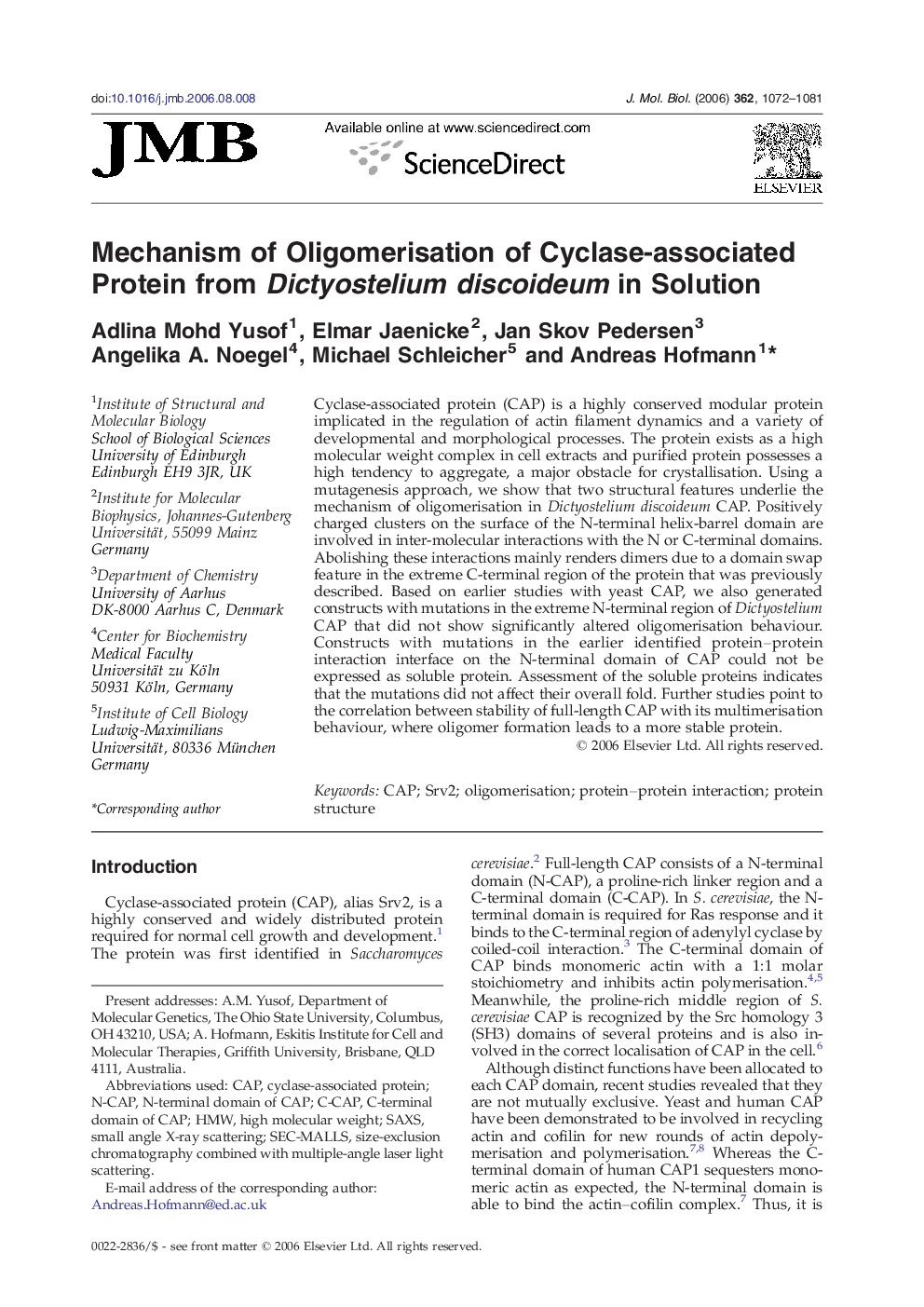| Article ID | Journal | Published Year | Pages | File Type |
|---|---|---|---|---|
| 2188866 | Journal of Molecular Biology | 2006 | 10 Pages |
Cyclase-associated protein (CAP) is a highly conserved modular protein implicated in the regulation of actin filament dynamics and a variety of developmental and morphological processes. The protein exists as a high molecular weight complex in cell extracts and purified protein possesses a high tendency to aggregate, a major obstacle for crystallisation. Using a mutagenesis approach, we show that two structural features underlie the mechanism of oligomerisation in Dictyostelium discoideum CAP. Positively charged clusters on the surface of the N-terminal helix-barrel domain are involved in inter-molecular interactions with the N or C-terminal domains. Abolishing these interactions mainly renders dimers due to a domain swap feature in the extreme C-terminal region of the protein that was previously described. Based on earlier studies with yeast CAP, we also generated constructs with mutations in the extreme N-terminal region of Dictyostelium CAP that did not show significantly altered oligomerisation behaviour. Constructs with mutations in the earlier identified protein–protein interaction interface on the N-terminal domain of CAP could not be expressed as soluble protein. Assessment of the soluble proteins indicates that the mutations did not affect their overall fold. Further studies point to the correlation between stability of full-length CAP with its multimerisation behaviour, where oligomer formation leads to a more stable protein.
